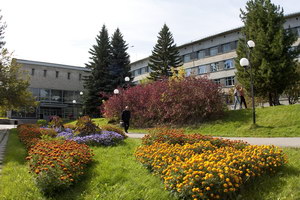Interstate power interconnection along with carbon dioxide emission constraint collaboration: Effective tool for low-carbon electric power expansion in Northeast Asia

Interstate electric power integration with the formation of interstate electric ties and power interconnection in Northeast Asia has been studied for several years. Research has examined the directions, indicators, costs, and systemic (integration) benefits (technical, economic, environmental, etc.) of forming such ties and grids. Studies conducted in different Northeast Asia countries have shown that despite the significant investments required to create an interstate electric ties infrastructure, which serves as the basis for interstate power grids and electricity markets development, participants of these interstate power grids and markets gain substantial benefits. These include reduced needs for installed and reserve generation capacity, lower electricity prices, increased overall flexibility of power resources, and accordingly, greater capability to integrate renewable energy sources. This results in reduced carbon dioxide (CO2) emissions from fossil fuel power plants. The latter undoubtedly contributes to achieving the sustainable development goals set by the United Nations and reducing anthropogenic climate impact, which many countries globally (including Northeast Asia) have targeted via announced carbon neutrality by 2050–2060. The main target of the article is to conduct and present new multi-scenario study on forming a potential Northeast Asia's interstate power grid under national and grid-wide (for the entire power system interconnection) carbon emission constraints. The mathematical model of electric power system expansion and dispatching was modified to account for carbon dioxide emission constraints and used for the study. The results of the study showed that the creation of interstate power grid in Northeast Asia accompanied by climate change collaboration among countries to control carbon dioxide emission would lead to effectively constraining of carbon dioxide emission in the subregion, which is the novelty of the study. The results of the study are useful and applicable for choosing particular ways, options, stages of formation and expansion of low-carbon power system interconnection in Northeast Asia. © 2024 The Authors
Библиографическая ссылка
Podkovalnikov S. , Marchenko O. , Trofimov L. , Chudinova L. , Solomin S. , Trofimov I. Interstate power interconnection along with carbon dioxide emission constraint collaboration: Effective tool for low-carbon electric power expansion in Northeast Asia // Energy Conversion and Management: X. Vol.23. ID:100639. 2024. DOI: 10.1016/j.ecmx.2024.100639


